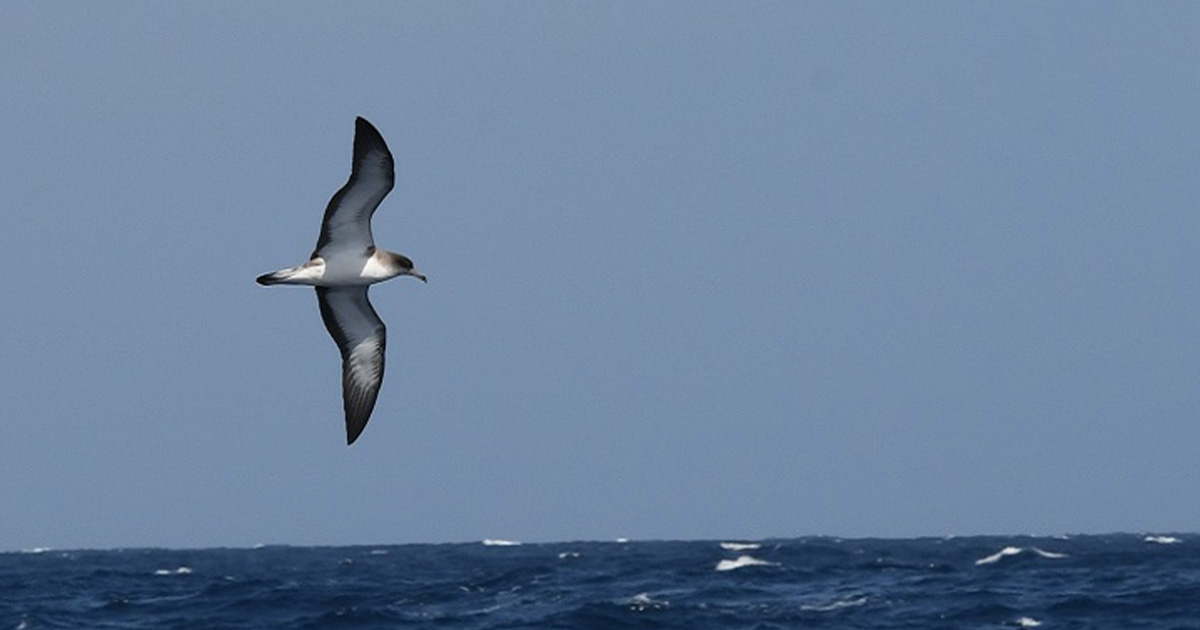Every year, around 70,000 turtles and 200,000 seabirds die due to fisheries bycatch by the EU fishing fleets. These examples, which could be extended to other marine species, reveal the real dimension of the environmental impact generated by the bycatch problem, derived from the interactions between the fishing fleet and the marine megafauna.
The bycatch of threatened species also represents a problem to the fishing industry with severe economic and legal consequences.
REDUCE (Reducing bycatch of threatened megafauna in the East Central Atlantic), is a new project with a budget of almost nine million euros funded by the EU Horizon Europe program, which will be carried out from January 2024 to December 2027. Its main aim is to promote more sustainable fisheries management and reduce the bycatch of some of the most threatened marine wildlife. The project is co-led by Professor Jacob González-Solís and Lecturer Manel Gazo, from the Faculty of Biology and the Biodiversity Research Institute (IRBio) of the University of Barcelona.
Its consortium is made up of thirteen partners from five different countries: Spain, Portugal, France, Senegal and the United Kingdom. Full partners include the universities of Barcelona (UB), Valencia (UV), Santiago de Compostela (USC) and Coimbra (UC); the Institute of Marine Research (IIM) and the Spanish Institute of Oceanography (IEO) from the Spanish National Research Council (CSIC); the Technology Centre of the Sea–CETMAR Foundation (CETMAR); the Research Institute for Development (IRD); the Interdisciplinary Centre of Marine and Environmental Research (CIIMAR); the Research Centre in Biodiversity and Genetic Resources (CIBIO-BIOPOLIS) the company DATAFISH and the Regional Partnership for the Conservation of Coastal and Marine Zones (PRCM). BirdLife International and the Marine Biological Association, both with their headquarters in the United Kingdom, will be associated partners in this project.
Bycatch Threatens Marine Biodiversity
Bycatch can account for up to 40% of total fishing catches, globally reaching as much as 38 million tons discarded per year. This volume of bycatch disrupts the oceanic food chain and can pose a threat to the survival of species already under pressure from various other human activities.
Several national, European and International regulations share an objective, which is also featured in the EU Biodiversity Strategy: making fisheries compatible with environmental protection measures to conserve threatened marine species. The REDUCE project will focus specifically on developing and testing new technologies and management strategies for better assessing, monitoring, and reducing the bycatch of birds, turtles, cetaceans, sharks and rays in the European long-distance fishing fleet of trawlers, purse-seiners and longliners, operating in Atlantic Ocean waters from the coasts of the Iberian Peninsula to Macaronesia and the Gulf of Guinea.
Bycatch of seabirds and sea turtles is only the most visible tip of the iceberg. While the risk of extinction of many threatened seabird and sea turtle species is well known, the conservation status of many species of cetaceans, sharks and rays in these marine regions is of no less concern.
“REDUCE aims to gather the efforts of all sectors involved in this issue and to apply the most innovative interdisciplinary scientific approaches to reduce marine megafauna bycatch. In these marine regions, the search to understand megafauna bycatch rates, the causes, their impact and ways to mitigate them has been underdeveloped compared to other areas where the EU fishing fleet operates", notes Jacob González-Solís, head of the Seabird Ecology Lab at the UB.
"Bycatch is the most common conservation problem and the leading cause of human-induced mortality among marine megafauna species. The fact that they are unwanted catches does not justify inaction. We must employ science, education, communication, and engagement of all stakeholders to efficiently address the problem. Our strategy involves engaging with all economic sectors, with a particular focus on the fishing industry and relevant policy actors, to explore feasible pathways for reducing mortality associated with fishing activities", adds Manel Gazo, a member of the UB's Research Group on Large Marine Vertebrates.
This initiative aims to enhance fisheries monitoring programs, incorporating electronic monitoring, promote understanding of bycatch and its impacts across scientific, economic, and societal dimensions, and assess potential mitigation measures. Developing sustainable solutions for bycatch requires integrating diverse sources of scientific data and critically evaluating current marine governance frameworks in the areas targeted by REDUCE. This process involves close collaboration with industry and authorities, including those in Western African countries. Addressing this significant challenge aligns with the international treaty adopted by the UN in March 2023 to protect marine biodiversity areas beyond national jurisdictions (Areas Beyond National Jurisdiction, BBNJ).
Over the past five years, our understanding of the impacts of industrial fisheries on vulnerable species, such as seabirds and sea turtles, has significantly advanced in the West African region. This progress can be attributed to the project Minimizing Bycatch of Seabirds and Sea Turtles in West African Industrial Fisheries,' a regional initiative funded by the MAVA Foundation and coordinated by BirdLife International. The project, carried out in collaboration with partners including UB, IRD, the Convention on Migratory Species, the PRCM, and fisheries departments from Senegal, Guinea, Mauritania, Guinea-Bissau, The Gambia, Cabo Verde, and Sierra Leone, has played a crucial role in achieving this improvement.
“REDUCE has come at just the right time to consolidate and build on the achievements of past initiatives, while at the same time expanding and strengthening our scientific knowledge of bycatches of vulnerable species which is needed to inform action for the sustainability of marine resources in this region,” says Tabea Zwimpfer, BirdLife Africa marine coordinator.



